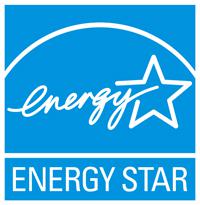An energy efficient home can provide homeowners with significant savings on their utility bills along with allowing them to contribute to the preservation of the environment.
Many consumers though may wonder if they can afford a new energy efficient home or the cost of improving their existing home’s efficiency. Fortunately, there are a number of national, state and local funding sources that can help consumers handle the associated expenses.
 ENERGY STAR program
ENERGY STAR program

One of the most popular funding sources is ENERGY STAR, a joint program run by the U.S. Environmental Protection Agency (EPA) and the U.S. Department of Energy (DOE). The program is available for home and business owners.
ENERGY STAR can help consumers save money on products, home improvement, new homes, buildings and industrial plants. For example, the Energy Efficient Mortgages (EEM) program is a loan that provides home energy efficiency credits.
The borrower has the option to add energy saving features to the home that allow them to qualify for larger mortgage loans. In order to obtain an EEM, a home energy rater will typically survey the home first to see if it qualifies for the program.
An EEM is typically a new home while existing homes brought up to a qualifying efficiency rating are eligible for Energy Improvement Mortgages (EIMs).
Improving your home’s energy efficiency
Through ENERGY STAR, homeowners can receive financial assistance for a number of energy efficiency improvements to their existing home.
For example, certain products like rooftop photovoltaic panels, small residential wind turbines and geothermal heat pumps qualify for tax credits. Replacing old inefficient household appliances with new ENERGY STAR certified appliances qualifies homeowners for government rebates.
A professional energy audit of a home may qualify the homeowner for state, local and utility sponsored incentives. For a listing of these incentives, consumers can visit the Database of State Incentives for Renewables and Efficiency (http://dsireusa.org/).
 Examples of savings from energy efficient systems
Examples of savings from energy efficient systems

Buying an energy efficient new home or making improvements to an existing home can result in significant savings on an annual basis.
For example, here is a list showing how much an efficient home central air conditioning system will save homeowners in three American cities when replacing a unit with a 13 SEER rating with a more efficient 14.5 rated system.
• Phoenix – Rate: $0.115/kWh, Annual savings: $168
• Des Moines – Rate: $0.115/kWh, Annual savings: $74
• Honolulu – Rate: $0.115/kWh, Annual savings: $395
Replacing a conventional air source heat pump with a Heating Seasonal Performance Factor (HSPF) rating of 7.7 and a SEER rating of 15 with an ENERGY STAR qualified unit with respective ratings of 8.2 and 15 also provides significant savings.
• Washington DC – Rate: $0.115, Annual savings: $347
• Savannah – Rate: $0.115, Annual savings: $299
• Anchorage – Rate: $0.115, Annual savings: $365
While the ENERGY STAR certified equipment is more expensive upfront than conventional equipment, the life cycle costs are less even without factoring in government incentives and funding assistance.
For example, in the above example of using an ENERGY STAR qualified heat pump in Anchorage, Alaska, the life cycle savings add up to $2,426.
DOE Home Challenge
The DOE offers a Builder’s Challenge program that allows builders to qualify for the DOE Home Challenge certification that represents the highest standard in home energy efficiency.
In order to qualify, a Challenge Home must not only meet ENERGY STAR standards but must also perform optimally in terms of the EPA’s Indoor airPlus and WaterSense for New Homes programs. Additionally, the home must meet standards for luxury, quality and enduring value.
Consumers can rest assured that a DOE Challenge Home offers the highest levels of energy efficiency and savings along with providing comfort, safety and durability.
Other funding sources
In addition to the ENERGY STAR program, there are many other national, state and local funding opportunities.

The program requires no down payment and SolarCity actually owns the rooftop panels. SolarCity charges the customer on a monthly basis with the new bill replacing the old utility energy bill often at significant savings.
For homeowners who would rather own the solar panels, there is the “pay as you go” financing option. In this case, the customer also makes no down payment and replaces the old utility with the new solar bill. However, eventually the customer will own the panels and will have free access to all the energy produced by the rooftop system.
The Environmental Protection Agency has an extensive listing of funding sources at the following URL: http://www.epa.gov/greenbuilding/tools/funding.htm.
Provided by www.refinancemortgagerates.org

